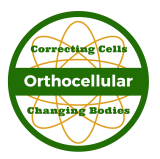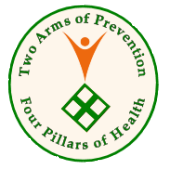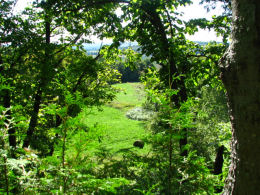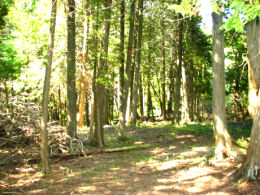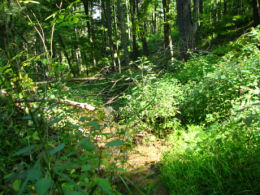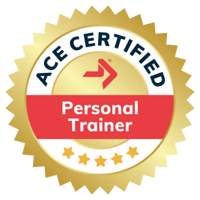Orthocellular Nutrition and Exercise Inc.
Regaining Lost Bone Mass
... for those 45 plus ...
The program Regaining Lost Bone Mass is customized for adults aged 45 plus who understand the devastating effects the loss of bone mass can have on the functioning of their bodies, and on their activities of daily life.
- First, we take a quick look at the bone loss numbers.
- Next, there is a description, objectives, prerequisites, and structure.
- At the bottom of the page, you can link directly to the registration page to sign-up for the program.
Body Basics
Bone Mass Loss with Age
Bone Mineral Density (BMD) testing is most commonly done using a dual-energy X-ray absorptiometry (DEXA) test. Measurements are taken at the hip and spine only. The more minerals present in the bone, the denser the bone appears on the X-ray. However, it cannot measure bone quality in terms of its strength or architecture.
BMD measurements are reported as either T-Scores or Z-Scores. T-Score readings are expressed as standard deviation (SD) scores above or below the average measurement of a young normal population, usually 20 to 35 year-olds with peak bone mass. For example, a T-Score of -1 indicates 1 SD below the average normal for a young person of the same gender, whereas a T-Score of -2 indicate 2 SD below the same average normal.
- Normal: Range of 2.5 to -1 (25% gain to 10% loss in bone mass)
- Osteopenia: Range of -1 to -2.5 (10% to 25% loss in bone mass)
- Osteoporosis: Below -2.5 (More than a 25% loss in bone mass)
Every T-Score below or above 0 represents on average of about 10 to 15 percent reduction or increase in bone mass, respectively. For example, a T-Score of -2 in the hip indicates about a 20% lower bone mass than a young person with peak bone mass.
The Typical 50-Year-Old
Assume this person is now 50 years of age. This would mean that he or she has been losing about 1% of their bone mass per year between the ages of 30 and 50. Adults who eat a highly-acidic, nutrient-deficient diet and who do not perform any type of bone-loading exercises on a regular basis, sacrifice at least a 10% loss of bone mass every decade, and adults older than 50 lose even more than that, at a faster rate each year.
Therefore, by the age of 50 you may have lost up to 25% of your bone mass. This means you may have crossed the threshold from osteopenia into osteoporosis. Not a good situation to be in!
Enter the Regaining Lost Bone Mass Program
Now is the time to recover the loss with our bone strengthening program! And you get to feel the strength in your movements again!
Program Description
Gains in bone strength, density, and mass are the hallmarks of this adult nutrition and exercise program! The Regaining Lost Bone Mass program is designed to rebuild the necessary bone health so you can maintain your activities of daily life and/or prepare yourself for more rigorous exercise activity.
It is great for adults, aged 45 plus, who are de-conditioned and returning to activity after a long lay off, and/or for active adults who need to improve their nutrition protocols and exercise routines for bone strengthening and maintenance purposes.
Program Objectives
The overall objectives of this program are to regain lost bone mass, as well as enhance bone size and strength throughout the body by:
- recovering lost bone strength,
- slowing the loss of bone mass on the internal bone surfaces, and
- rebuilding lost bone mass on the external bone surfaces.
Program Prerequisites
The participants in the Regaining Lost Bone Mass program need to come in with the following characteristics:
- Age: Adults aged 45 plus, male or female
- Weight: Normal, within 10% of your set point weight
- Fitness Level: Foundational level, de-conditioned, or active
- Health Conditions: No osteoporosis
- Current Residence: Northern Ontario
Note: The prerequisite for the Weight-Bearing|Bone-Loading Exercise Routine III: Advanced- Level Indoor Program is the completion of the separate program entitled Regaining Lost Muscle Mass: For Those 45+.
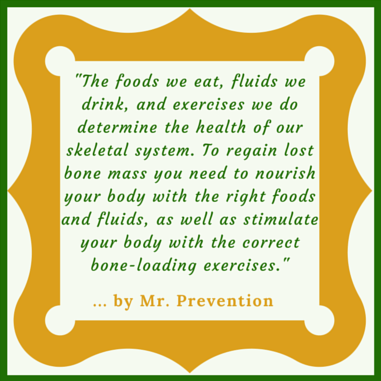
Program Structure
Pillar #1: Lost Bone Mass : Nutritional Aspects : Hormonal Factors
The first part of the program consists of the following three appointments:
Appointment #1: Lost Bone Mass: The opening appointment includes an introduction to the program, forms and questionnaires, if required, as well as the following topics:
- All About Your Bones
- Strong Bones: Part I
- Strong Bones: Part II
- Bone Protection
- The Truth About Your Aging Bones
- Bone Health
- What is Osteoporosis?
- The Truth about Osteoporosis
Appointment #2: The Nutritional Aspects: Here, we delve into the nutrition protocols. More specifically, we get into the correct foods, the proper fluids, and the right fortifiers for rebuilding your bone mass over time. A number of handouts are also included.
A. Nutrition Protocols I: The Correct Foods
Proper Nutrition and Healthy Bones
Minerals, Vitamins, and Protein for Strong Bones
Foods to Add to Rebuild Lost Bone Mass
Foods to Avoid to Prevent the Loss of Bone Mass
B. Nutrition Protocols II: The Proper Fluids
Fluids to Add to Maintain Healthy Bones
How Much Should I Drink Each Day?
Fluids to Avoid to Prevent Bone Loss
C. Nutrition Protocols III: The Right Fortifiers
The Supplement Requirements
Case 1: Mineral Absorption is Normal
Case 2: Mineral Absorption is Abnormal
The Best Fortifiers for those 50+
Appointment #3: The Hormonal Factors: This appointment is all about the hormone connections to bone loss, especially as one ages. For those 50+, we need to look at your vitamin D status, as well as your testosterone, estrogen, DHEA, and Human Growth Hormone levels.
- The Vitamin D Connection
- The Osteocalcin Connection
- The Testosterone Connection
- The Estrogen Connection
- The Vitamin K2 Connection
- The DHEA Connection
- The Human Growth Hormone Connection
Pillar #2: Weight-Bearing and Bone-Loading Exercise Sessions
The exercise routines in this part of the program are designed to rebuild the necessary bone strength and mass throughout the body so you can maintain your activities of daily life and/or prepare for more rigorous exercise activities.
A. Forms, Tests, Assessments, and Evaluations
B. Weight-Bearing|Bone-Loading Exercise Routine I: Beginner-Level Indoor Program
- Stream 3 Program: Males 50+
- Stream 4 Program: Females 50+
C. Weight-Bearing|Bone-Loading Exercise Routine II: Intermediate-Level Outdoor Program
- Stream 3: Program customized for the Male Client
- Stream 4: Program customized for the Female Client
D. Weight-Bearing|Bone-Loading Exercise Routine III: Advanced-Level Indoor Program
- Program Introduction
- Program Design
- Program Implementation
- Strength and Cardio Routine: Stream 3: Males 50+
- Strength and Cardio Routine: Stream 4: Females 50+
Note: The
prerequisite for the Weight-Bearing|Bone-Loading Exercise Routine III: Advanced- Level Indoor
Program is the completion of the separate program entitled Regaining
Lost Muscle Mass: For Those 45+.
To feel the strength in your movements, head to the registration page.
Registering for Regaining Lost Bone Mass
To sign-up for the program, head over to the registration page now and fill out the form with your contact information.
Lost Bone Mass Registration
Checkpoint ...
Return to the top of this page: Regaining Lost Bone Mass
Return to overviews: Two Pillar Programs
Head back home: Home Page
Caring is sharing ....
Four Pillars
of
Health
Pillar #1
Nutrition Protocols
Visit the Nutritionist's Kitchen
Pillar #2
Exercise Routines
Go to the Exercise Room
Pillar #3
Stress Reduction
Techniques
Head over to the Stress Reduction Place
Pillar #4
Detoxification
Methods
Check out the Detox Centre
Preventative
Health Contract Services
Business
and
Industry
Educational
Institutions
Health
Agencies
Preventative
Health Business Opportunities
Four Pillar
Licences
Two Pillar
Licences
Image Galleries
Click one of the thumbnails below to view a series of photos taken on the Bruce Trail and Georgian Bay.
E-publications
Our E-books
Workshops
Free Workshops
Spring 2026
Go to: Free Workshops
Blog
The Preventative Way
with
Mr. Prevention
On The Preventative Way page we reveal a number of scientific facts related to how we function at the cellular level to keep our bodies healthy. Visit this page often as new facts, quotes, videos, tips, and traps will be added from time to time.
Go to: The Preventative Way
Connect with Us
on Facebook
Visit the American Council on Exercise
American Council on Exercise offers four certifications for aspiring fitness professionals including their Certified Personal Trainer (ACE-CPT) designation. Click on the ACE logo to find out all about their programs and certifications..
The Leap Manifesto
A call for a Canada based on caring for the Earth and one another is the message on this organization's site.
Click on the above logo to read the manifesto and then sign it. Orthocellular supports this initiative because it is about positive change for the people and the environment that we all share. The changes need to start now!
